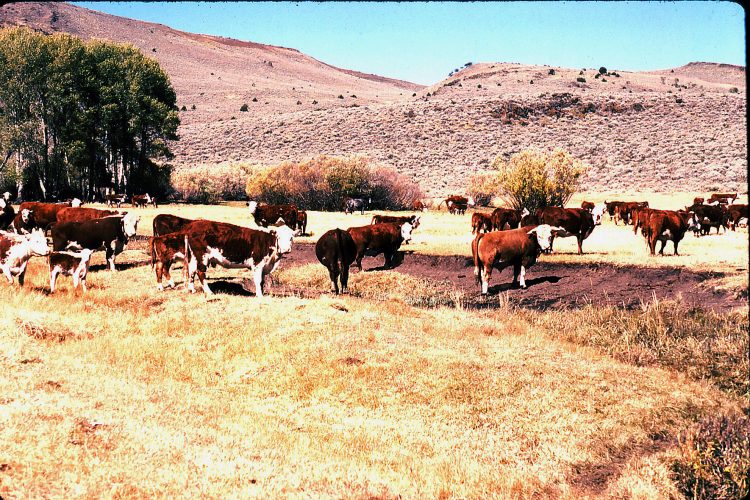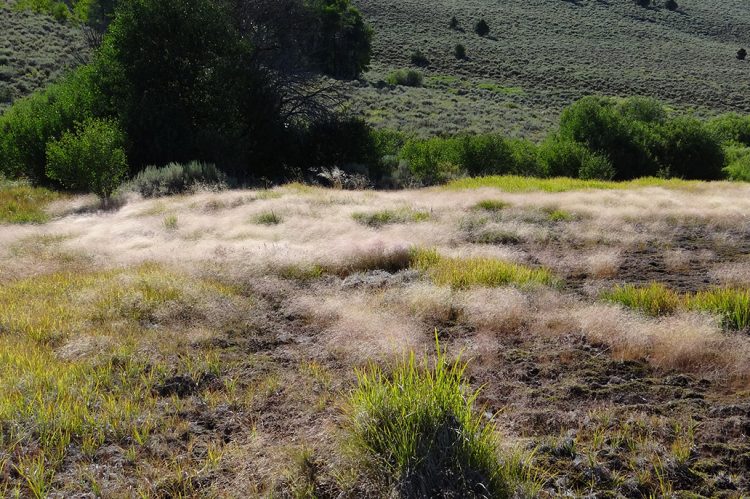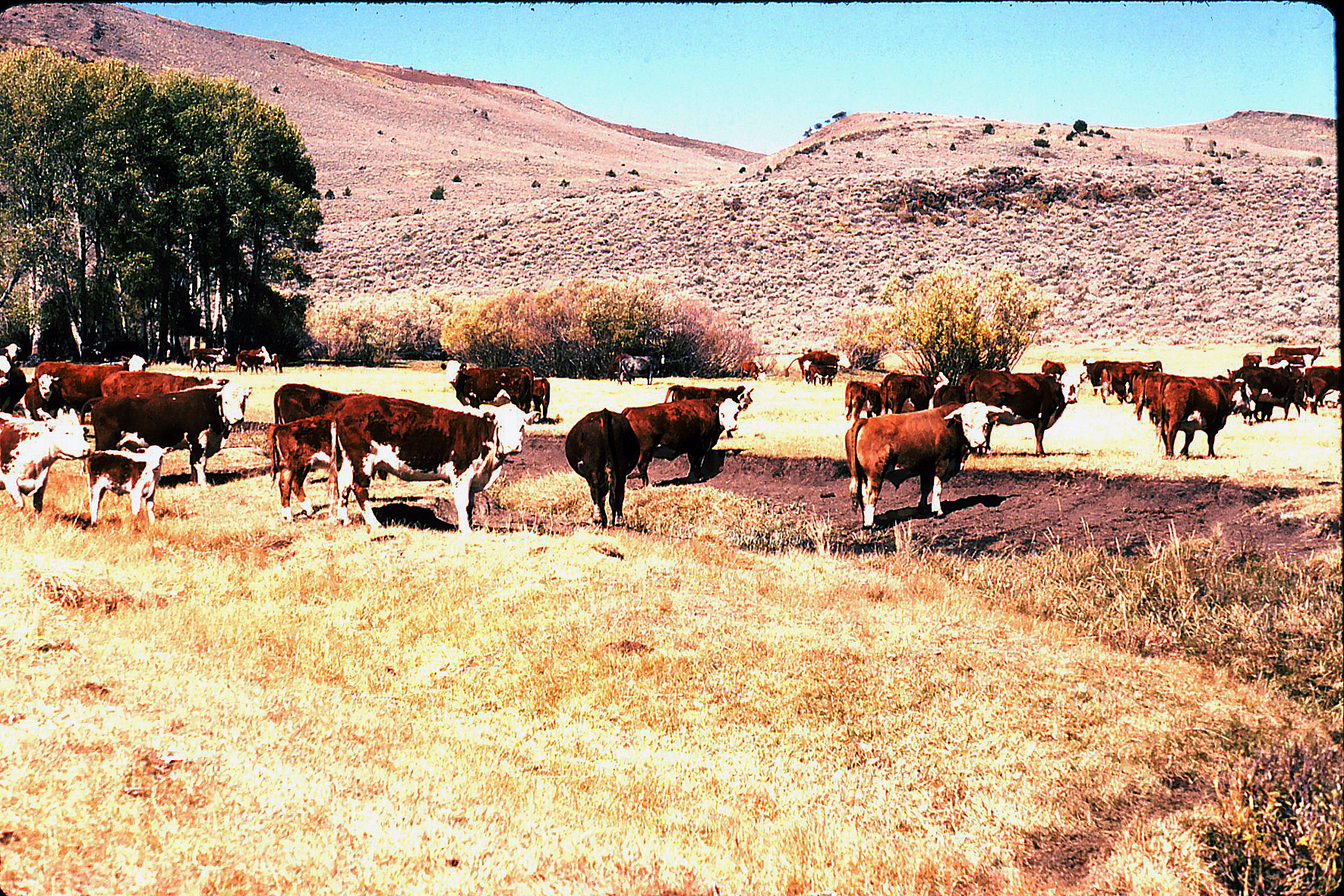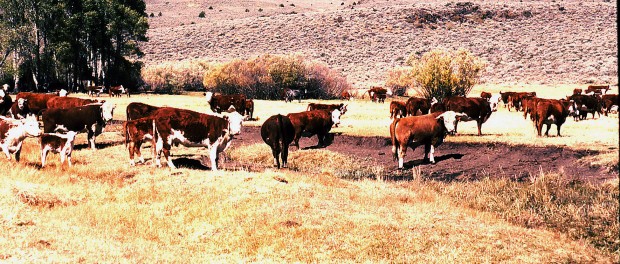
Livestock have been severely depleting public rangelands for decades. They do so by trampling vegetation, damaging soil, spreading invasive weeds, polluting water, increasing the likelihood of destructive fires, depriving native wildlife of forage and shelter and even contributing to global warming—all of which has been noted in study after study. Global studies. Peer-reviewed studies. Government studies. Lots of studies going back many years.
So why do people get up in arms about drilling for oil in the Arctic national wildlife refuge, demolished forests and polluted streams, but accept cattle trampling wildlife refuges and national parks, forests and grasslands as if that’s a productive use of our nation’s shared landscape?
Why does that damage—amounting to as much as a one billion dollar subsidy to a very small slice of the livestock industry every year—go unmentioned by a media that so eagerly condemns climate change deniers and proponents of fracking? (Read The Daily Pitchfork’s analysis of the destructive economics of public lands ranching here).
Perception.
Everyone can recognize an oil-soaked sea bird, a clear-cut forest, a stream that’s been ruined by industrial pollutants and extreme drought and other destructive weather. But few Americans visit the nation’s public grass and forest lands; fewer still know what livestock damage actually looks like on them.
This is something that the media’s present fascination with grass-fed beef being good for everyone (not just people, but cattle and western grass and forest land) has directly abetted with the help of western politicians, the beef industry and livestock producers themselves.
The media, it turns out, comfortably quotes ranchers on conservation issues but not scientists. Not surprisingly, the immense negatives of ranching in the arid West seldom make their way into mainstream media.
You can thank all that for conditioning the public to see ranchers as trusted stewards and cattle and sheep as native grazers of one million square kilometers of public land in 11 western states where livestock receives preferential treatment at great cost to everyone but livestock operators. That photographs of cattle impacting sensitive Western ecosystems don’t make the news shouldn’t surprise anyone.
That’s what makes the newly published study in Environmental Management—Restoration of Riparian Areas Following the Removal of Cattle in the Northwestern Great Basin—so important. It shows what devotees of grass-fed beef, rotational grazing and holistic management (Allan Savory) spend so much of their careers glossing over: visual proof of what livestock damage looks like—in this case, within a wildlife refuge in Oregon.
The study assessed the effects of livestock in riparian systems at Hart Mountain National Antelope Refuge in southeastern Oregon, 23 years after the removal of cattle grazing, using 64 before and after photographs.
To see them is to be impressed by how badly cattle are suited to the arid public lands of the West, and how long it takes these sensitive ecosystems to recover once cattle are removed.
Riparian areas are critically important ecosystems located along the banks of rivers, streams, creeks, or any other water networks where cattle congregate (because public lands are mostly arid and not irrigated).
To damage a riparian area isn’t just to despoil it for cattle; it’s to despoil it for every critter dependent on that ecosystem: fish, frogs, birds and native populations of elk and antelope, among other species.
The Environmental Management report cites numerous scientific studies in painting a graphic picture for the American public:
Cattle grazing can indirectly cause a significant decrease in bird species abundance and diversity, largely by removing shrubs that are important habitat for many bird species. Altered stream cover, water depth, and bank stability due to cattle grazing can all affect fish populations. Cattle grazing can accelerate stream bank erosion, causing streams to become shallower and wider, which can result in higher water temperatures.
Other water quality issues that can result from the presence of cattle include pollution from excrement and increased sedimentation from trampled banks. Decreases in both the density and height of woody plants have been documented with grazing activity along with increases in exotic species… Although grazing can sometimes lead to greater species richness and diversity, this often occurs due to the introduction of invasive species and the suppression of vegetation cover. Other documented effects of cattle include loss of native biodiversity, interruption of nutrient cycling, and destruction of biotic soil crusts.
As the study further states:
Cattle grazing can exacerbate effects of climate change. Ecosystems stressed by grazing activity may be less resistant to temperature and moisture changes, compared to ecosystems that have had time to recover.
But it’s the photographs that drive the message home:
As the study describes, while there are extensive perennial and intermittent streams within the refuge, riparian areas represent just 1 percent of the total land area. Approximately half the streams are inhabited by fish except during periods of drought when adequate water is not available.
In 1994, at the time that it was decided to remove livestock from the refuge, only 13 percent of the streams were characterized as being in good condition, with 73 percent of riparian areas characterized as either poor or in very poor condition. Cattle grazing was identified as the leading cause of stream and riparian degradation at Hart Mountain, according to the US Fish and Wildlife Service.
Twenty-three years later, when the photographs comprising the study were taken, there was a dramatic reversal of that damage:

“Results indicated that channel widths and eroding banks decreased in 64 and 73 percent of sites, respectively. We found a 90 percent decrease in the amount of bare soil and a 63 percent decrease in exposed channel as well as a significant increase in the cover of grasses/sedges/forbs, rushes and willow.”
As it happens, few Americans are aware that cattle—which were brought to this country 400 years ago—originated in lush, wet climates of Asia. They are no more native to the arid West than are alligators (in fact, there are more cattle produced in Florida than on western public lands leased to livestock operators).
It’s also important to note that only 2.7% of the nation’s livestock spend any portion of their brief lives grazing on western public rangelands, which are so stripped of vegetation that 100 acres are needed to sustain a cow compared to a couple of acres of pasture in the eastern US. This is how such a small percentage of the nation’s livestock have wrought such a large environmental impact on public lands—something very few Americans realize.

These Photos, are much like the Valley that We live in, Cattle and Sheep have robbed the Natural Grasses, and imported weed that choked out anything that was decent.
But the before and after photos—not just the three side-by-side comparisons in the photo gallery, but all 64—put all that in context.
Whether or not you’re a science person, prone to reading studies, it’s not hard to see a difference with the naked eye.
A few years before cattle were removed in the study area, Edward Abbey wrote in Cowburnt, which was published in Harper’s Magazine,
The rancher (with a few honorable exceptions) is a man who strings barbed wire all over the range; drills wells and bulldozes stock ponds; drives off elk and antelope and bighorn sheep; poisons coyotes and prairie dogs; shoots eagles, bears, and cougars on sight; supplants the native grasses with tumbleweed, snakeweed, povertyweed, cowshit, anthills, mud, dust, and flies. And then leans back and grins at the TV cameras and talks about how much he loves the American West.
The idea that ranchers are protecting western rangelands for present and future generations is a myth. Today, public lands ranchers depend on the public to subsidize the continued destruction of public lands through cheap grazing.
Yes, public grazing allotments do occasionally get retired, but they remain a hot property for ranchers because they come with such heavy fiscal subsidies, courtesy of US taxpayers—the very ones the media is telling to listen to ranchers and buy grass-fed beef.
As the Hart Mountain National Antelope Refuge study concludes, “the removal of cattle can result in dramatic changes in riparian vegetation, even in semi-arid landscapes and without replanting or other active restoration efforts.”
Don’t let the gentle, scientific tone fool you. Instead, return to those photos, read the supporting study and make up your mind. And if you’re in the media, report on that. We’ve all heard enough about how livestock is great for the environment. It’s time some truth was shared around the public campfire.
This is Part III of a four-part SourceWatch series on ranchers in the media:
[Part I] The Media Adores Ranchers. Here’s Why They Shouldn’t[Part II] Sustainable Cowboys or Welfare Ranchers of the American West? (an economic analysis of subsidized public lands ranching; contains reading list of source materials)
[Part IV] Forbes Billionaires Top US Welfare Ranchers List
For more on this topic, check out these other Daily Pitchfork features:
Allan Savory’s Fantasy Thrills Ranchers, But He’s Wrong
Guardian’s Wild Horse Meat Story Contains 92% Beef (article review)
Grass-Fraud Beef (article review)
Misrepresenting Wild Horses At The New York Times (article review)


Comments
GRAZING COWS ON GOVERNMENT PROPERTY COMPROMISES THE NATURAL ECO SYSTEM. WHAT IS WRONG WITH THE FISH AND WILDLIFE AGENCY ???? ARE THEY TOO STUPID TO KNOW ABOUT OUR FRAGILE ECO SYSTEM???…OR MAYBE THEY ARE BEING BOUGHT OFF BY THE GREEDY RANCHERS AND POLITICIANS.